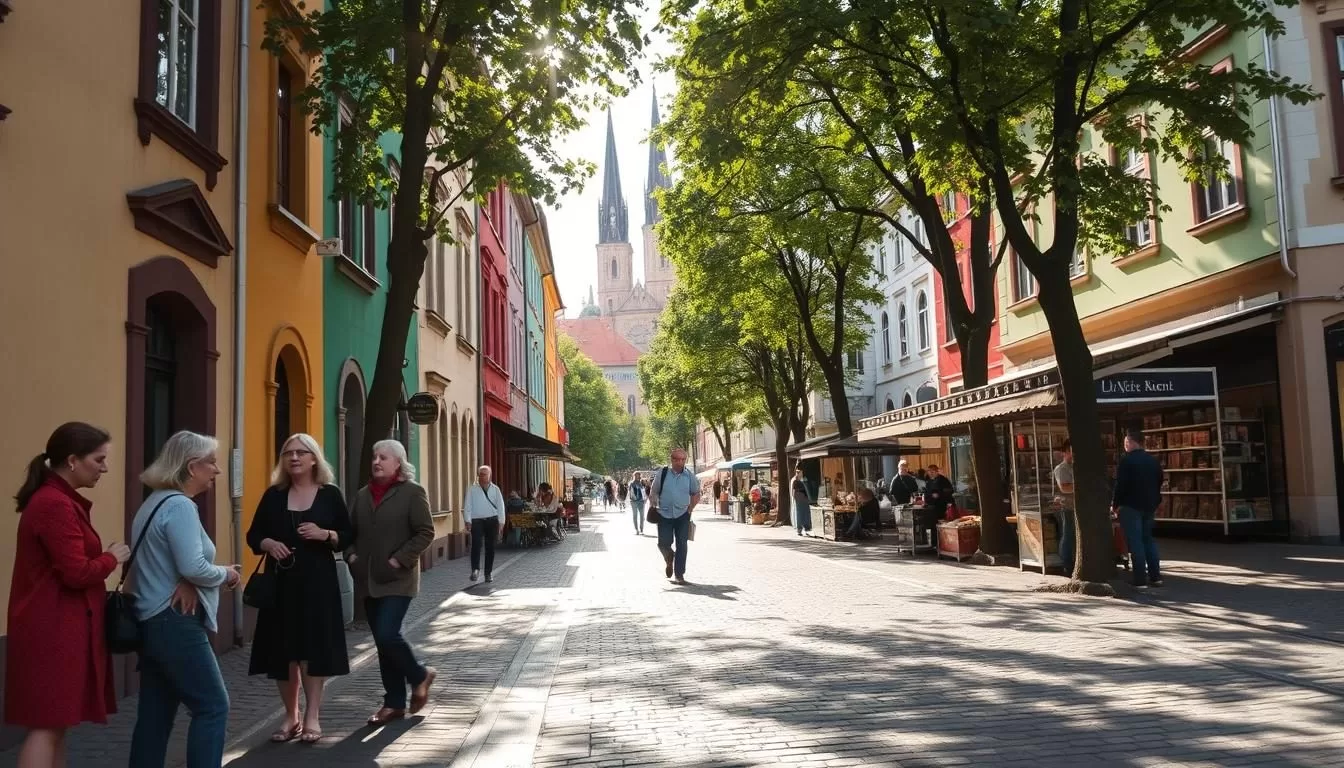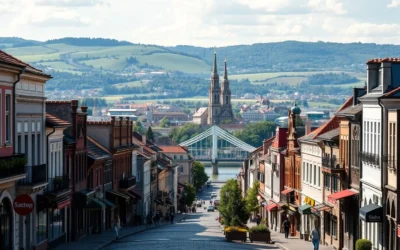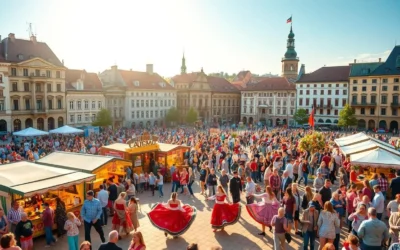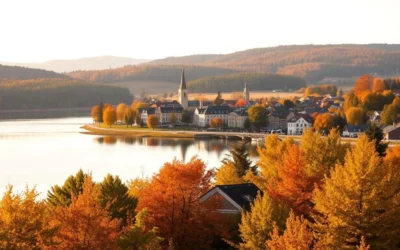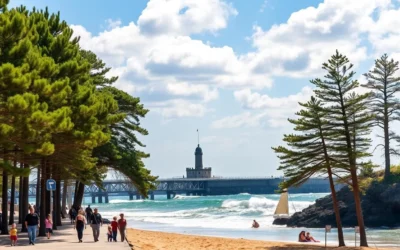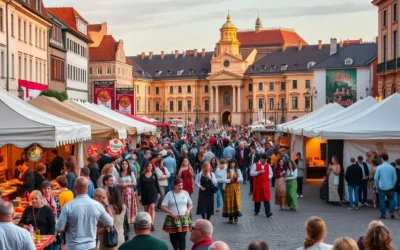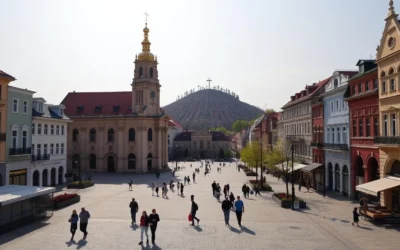✓ Accommodations ✓ Flights ✓ Rental Cars ✓ Tours & Activities
Welcome to a journey through the linguistic heritage of a country rich in culture and history. Here, language is more than just a means of communication—it’s a cornerstone of national identity. The official language, Lithuanian, is spoken by over 3 million native speakers worldwide, with 2.8 million residing in the country itself.
Lithuanian is one of the most conservative Indo-European tongues, preserving ancient roots that connect the past to the present. It’s not just a language; it’s a reflection of the country’s resilience and pride. Alongside Lithuanian, minority languages like Russian and Polish add to the linguistic diversity, creating a vibrant cultural tapestry.
This article will explore how language shapes identity, the coexistence of dialects, and the impact of globalization. You’ll also discover how government policies and cultural influences intertwine to preserve this unique heritage. Let’s dive into the fascinating world of language, history, and identity.
Introduction to Lithuania’s Linguistic Landscape
Dive into a world where language reflects centuries of history and tradition. Nearly 85% of the population speaks Lithuanian natively, making it the dominant tongue. However, the linguistic landscape is far from monolithic. Minority languages like Russian and Polish add layers of diversity, creating a rich cultural mosaic.
The roots of this linguistic heritage trace back to ancient Indo-European origins. Lithuanian is one of the oldest surviving languages in this family, preserving features that connect it to its prehistoric ancestors. This historical depth makes it a fascinating subject for linguists and historians alike.
Regional dialects further enrich the linguistic tapestry. From Samogitian in the west to Aukštaitian in the east, each region has its unique linguistic flavor. These dialects not only reflect geographical diversity but also tell stories of local traditions and identities.
Today, the interplay between native and minority languages continues to shape the cultural fabric. Bilingualism is common, with many people fluent in Lithuanian and Russian or Polish. This multilingualism is a testament to the country’s complex history and its ability to adapt while preserving its heritage.
“Language is the roadmap of a culture. It tells you where its people came from and where they are going.”
Understanding this linguistic landscape offers insights into the nation’s identity. It’s a journey through time, exploring how language has evolved while staying deeply rooted in its Indo-European origins. This blend of old and new makes it a unique and enduring part of the cultural narrative.
Historical Overview of the Lithuanian Language
Discover the rich history behind one of the oldest languages in Europe. The Lithuanian language traces its roots back to the Proto-Baltic language, which diverged approximately 3,000 years ago. This ancient connection makes it a living link to the Proto-Indo-European family, preserving features lost in other modern tongues.
The earliest written records date back to the 16th century, with the oldest known text being a translation of the Lord’s Prayer from 1503. These manuscripts highlight the language’s conservative grammar and phonology, which have survived through the centuries. For example, the first substantial book, “The Simple Words of Catechism,” was published in 1547, marking a significant milestone in its literary history.
During the 19th century, the National Revival played a pivotal role in shaping the modern language. This movement emphasized the importance of using Lithuanian in literature, education, and public life. Linguist Jonas Jablonskis was instrumental in establishing Standard Lithuanian, creating a unified written form that remains in use today.
Despite external pressures, the language retained its archaic features. For instance, it still uses seven grammatical cases, a rarity among modern European languages. This resilience reflects the deep cultural pride of its speakers and their commitment to preserving their linguistic heritage.
“Language is the soul of a nation, carrying its history and identity through time.”
Today, the Lithuanian language continues to thrive, with approximately 3 million native speakers worldwide. Its journey from ancient roots to modern standards is a testament to the enduring power of language in shaping identity and culture.
The Evolution of Lithuania’s Official Language
Explore how a language evolves from local dialects to a national standard. The journey of modern Lithuanian is a story of resilience and adaptation. From its early roots in the Grand Duchy to its formal codification in 1918, socio-political forces have shaped its development.
Regional dialects once dominated the linguistic landscape. Over time, these variations merged into a unified official language. This transition was driven by efforts to modernize and standardize the language used in literature, education, and administration.

Reforms played a crucial role in this transformation. Changes in orthography and terms helped streamline the language spoken across the country. For example, the introduction of new letters in the alphabet reflected its evolving needs.
The push for modernization often clashed with tradition. Yet, this balance ensured that the language remained rooted in its heritage while adapting to contemporary demands. Efforts to standardize grammar and pronunciation further solidified its role as a national symbol.
“A language is not just a tool for communication; it’s a living record of a nation’s history and identity.”
Government policies also played a key role. After gaining independence in 1918, modern Lithuanian was declared the official language. This status reinforced its importance in education and public life, ensuring its continued evolution.
Today, the language stands as a testament to cultural pride. Its journey from a spoken vernacular to a codified standard highlights the enduring power of linguistic heritage. Understanding this evolution offers insights into the nation’s identity and resilience.
| Key Milestones | Impact |
|---|---|
| 1918: Official Status | Standardized usage in government and education |
| 1930: Language Reforms | Modernized orthography and grammar |
| 2004: EU Recognition | Strengthened its role in international contexts |
Lithuania: Official and widely spoken languages
Language plays a vital role in shaping the cultural and social fabric of a nation. In this country, Lithuanian stands as the primary language, spoken natively by approximately 85% of the population. It’s not just a means of communication but a symbol of national identity and pride.
Alongside the official tongue, minority languages like Russian and Polish add layers of diversity. Russian is the largest minority language, spoken natively by 8.2% of the population, while Polish follows closely at 5.8%. These languages coexist harmoniously, enriching the cultural landscape.
The government plays a significant role in supporting linguistic diversity. Policies ensure that minority languages are preserved and respected. For instance, public services and education often accommodate these languages, fostering inclusivity.
Legislation also reinforces the use of the official language in public spaces. This balance between national unity and cultural diversity is a testament to the country’s commitment to its heritage.
“Language is the bridge between the past and the future, connecting generations and cultures.”
Everyday interactions reflect this linguistic harmony. Bilingualism is common, with many people fluent in both Lithuanian and Russian or Polish. This multilingualism highlights the adaptability of the population while preserving their roots.
Understanding this linguistic landscape offers insights into the nation’s identity. It’s a blend of tradition and modernity, where language serves as a cornerstone of cultural pride and unity.
| Language | Percentage of Native Speakers |
|---|---|
| Lithuanian | 85% |
| Russian | 8.2% |
| Polish | 5.8% |
Lithuanian Language Family and Its Conservation
Uncover the roots of a language that bridges ancient and modern times. The Lithuanian language belongs to the Baltic language family, a branch of the larger Indo-European language tree. This connection makes it one of the most conservative tongues in Europe, preserving features lost in other modern languages.
Linguistic research highlights that Lithuanian has retained many elements of Proto-Indo-European speech. For example, its grammar includes seven cases, a feature rare in contemporary European languages. This makes it a valuable resource for understanding the evolution of language over millennia.
Conservation efforts play a vital role in maintaining the purity of the Lithuanian language. Institutions and linguists work tirelessly to document and protect its unique features. For instance, archaic terms and grammatical structures are preserved in dictionaries and educational materials.
One key focus is the role of grammar in safeguarding its heritage. The language’s complex inflectional system, which includes noun declensions and verb conjugations, remains largely unchanged. This stability is a testament to its resilience and cultural significance.
“A language is not just a tool for communication; it’s a living record of a nation’s history and identity.”
Efforts to conserve the Lithuanian language also include promoting its use in modern contexts. Bilingual education programs and media initiatives ensure that it remains relevant in a globalized world. These steps help bridge the gap between tradition and modernity.
Understanding the Baltic language family and its conservation offers insights into the broader Indo-European language heritage. It’s a story of resilience, pride, and the enduring power of language to connect generations.
Dialect Diversity in Lithuania
Step into a world where regional accents paint a vivid picture of cultural identity. The dialect landscape is as diverse as the people who speak them. From the rolling hills of Samogitia to the plains of Aukštaitija, each region has its unique linguistic flavor.
These dialects are more than just variations in pronunciation. They carry the history and traditions of their regions. For example, the Samogitian dialect is known for its soft, melodic tones, while Aukštaitian features a sharper, more distinct sound.
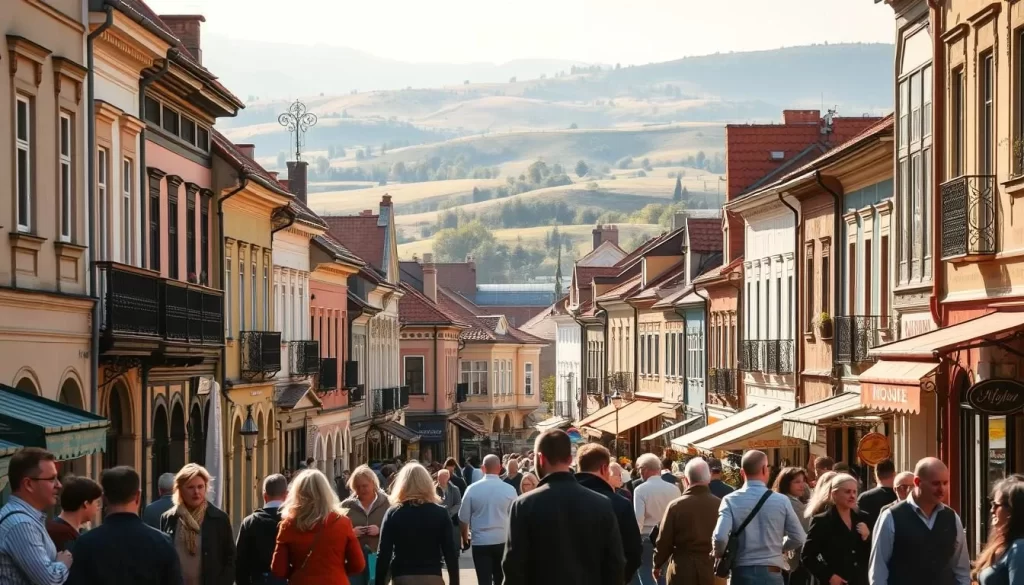
Local schools play a crucial role in preserving these regional forms. Many institutions incorporate dialect studies into their curriculum, ensuring that younger generations stay connected to their roots. This effort helps maintain the cultural richness that dialects bring to the national identity.
Native speakers also contribute to this preservation. They keep the unique vocabulary and pronunciation alive through everyday conversations. For instance, certain words in Samogitian are not found in standard language, making them a treasure trove of linguistic history.
“A dialect is not just a way of speaking; it’s a way of living, a connection to the land and its people.”
Despite challenges like urbanization and globalization, the commitment to preserving dialects remains strong. Communities celebrate their linguistic heritage through festivals, literature, and media. These efforts ensure that regional dialects continue to thrive.
Understanding this diversity offers a deeper appreciation of the nation’s identity. It’s a reminder that language is not just a tool for communication but a reflection of cultural pride and unity.
Modern Lithuanian: Grammar, Orthography, and Pronunciation
Understanding the structure of modern Lithuanian reveals its unique linguistic charm. The language is known for its systematic grammar and consistent orthography, making it accessible for learners. Its Latin-based script includes additional letters like Č, Š, and Ž, which add to its distinct sound.
One of the standout features is its predictability in pronunciation. Unlike English or French, the Lithuanian language follows a one-to-one correspondence between letters and sounds. This consistency simplifies learning and ensures clarity in spoken Lithuania.
The grammar is equally fascinating. Nouns are classified into masculine and feminine genders, with specific endings like -s for masculine and -(i)a or -ė for feminine. Adjectives, pronouns, and participles also follow gender rules, adding depth to sentence structure.
Pronunciation standards have evolved over time, but the core principles remain intact. Stress can fall on any syllable, reflecting its ancient Proto-Indo-European roots. This pitch system adds a melodic quality to the language.
“Mastering Lithuanian is like unlocking a window into the past, where every word carries centuries of history.”
Here’s a quick guide to some unique letters and their pronunciations:
| Letter | Pronunciation |
|---|---|
| Č | Like “ch” in “church” |
| Š | Like “sh” in “ship” |
| Ž | Like “s” in “measure” |
These elements make the Lithuanian language both challenging and rewarding to learn. Its regularity in script and sound ensures that once you grasp the basics, fluency becomes achievable.
Whether you’re exploring its grammar or practicing pronunciation, modern Lithuanian offers a rich linguistic experience. Its blend of tradition and accessibility makes it a fascinating subject for learners worldwide.
Language Influence During the Soviet Occupation
The Soviet occupation left a profound mark on the linguistic identity of the region. Policies aimed at suppressing the native language were implemented, with Russian imposed as the dominant tongue. This period, known as Russification, sought to erase cultural and linguistic diversity.
Despite these efforts, local communities resisted. Underground schools and cultural preservation initiatives kept the native language alive. Book smugglers played a crucial role, ensuring that literature and education continued in the face of oppression.
One notable example of resistance was the “schools of the hearth,” informal educational setups in villages. These schools taught children their native language and history, countering the forced imposition of Russian.
The legacy of this period is still felt today. Modern education systems emphasize the importance of preserving the native language while acknowledging the historical impact of the Soviet occupation.
Russification and Cultural Resistance
Russification was a systematic effort to replace the native language with Russian. Public spaces, media, and education were dominated by Russian, leaving little room for local tongues.
However, the resilience of the people was remarkable. Families passed down their language through generations, ensuring its survival. Cultural events and literature also played a role in maintaining linguistic pride.
Legacy in Modern Education
Today, the effects of the Soviet occupation are evident in the education system. Bilingual programs and cultural initiatives aim to balance the use of Russian with the preservation of the native language.
Efforts to teach younger generations about their linguistic heritage are ongoing. This ensures that the language remains a vital part of cultural identity, even as global influences grow.
| Key Events During Soviet Occupation | Impact on Language |
|---|---|
| 1940: Annexation by the Soviet Union | Russian imposed as the dominant language |
| 1863: Russification policies intensified | Underground schools established |
| 1990: Independence declared | Native language revival begins |
Minority Languages and Their Cultural Impact
The cultural tapestry of this region is enriched by the presence of minority languages, each adding unique threads to the national identity. Russian and Polish, in particular, play a significant role in shaping local traditions and fostering a sense of belonging among their speakers.
In many regions, these languages are more than just a means of communication—they are a bridge to heritage. For example, Russian is spoken by 8% of the population, while Polish is used by 7.7%. These communities often preserve their cultural practices through festivals, literature, and education.

Russian and Polish: A Closer Look
Russian has a strong presence in urban areas, where it serves as a lingua franca for many. Its influence extends to media, education, and daily interactions, making it a vital part of the community.
Polish, on the other hand, is deeply rooted in specific regions, particularly those near the border. Schools in these areas often offer instruction in Polish, ensuring that younger generations stay connected to their roots.
Government Support for Minority Language Use
The government actively promotes bilingual education, recognizing the importance of preserving linguistic diversity. Public services and media are often available in minority languages, fostering inclusivity.
Community initiatives also play a crucial role. Local organizations work to document and promote these languages, ensuring they remain a vibrant part of the cultural landscape.
“Language is the soul of a culture, carrying its history and identity through generations.”
Here’s a breakdown of minority language speakers by region:
| Language | Percentage of Speakers | Primary Regions |
|---|---|---|
| Russian | 8% | Urban Areas |
| Polish | 7.7% | Border Regions |
| Belarusian | 1.5% | Rural Areas |
Understanding the role of minority languages offers insights into the delicate balance between national unity and cultural diversity. For more details on the population demographic situation, explore this resource.
Foreign Language Adoption in Lithuania
Foreign language skills are becoming a cornerstone of modern communication. In recent years, the ability to speak multiple languages has grown significantly, especially among younger generations. English is now the most commonly learned foreign language, driven by its role as a global lingua franca.
Tourism and global media have played a key role in this trend. Exposure to international content has made learning English a priority for many. Over 95% of working-age adults report knowing at least one foreign language, placing the country among the top 10 in the EU for language proficiency.
Education policies have also supported this shift. Starting from grade 4, students are required to learn a foreign language, with English being the most popular choice. By grade 6, a second language is introduced, often Russian or another European language. This structured approach ensures that younger generations are well-prepared for global communication.
Statistics show that there is minimal generational gap in language knowledge. Both younger and older adults report similar levels of proficiency, reflecting the country’s historical emphasis on multilingualism. For example, over 90% of employed individuals are fluent in at least one foreign language.
“Language is the bridge that connects cultures, enabling us to share ideas and build understanding.”
Schools and cultural institutions are at the forefront of this movement. Programs like the European Language Portfolio help track and encourage language learning. These efforts ensure that multilingual communication remains a vital part of the cultural landscape.
For more insights into how language policies shape education, explore this detailed resource. The rise of foreign language adoption is not just a trend—it’s a reflection of a globalized world where communication knows no borders.
Impact of Globalization on Lithuania’s Language Use
Globalization has reshaped how we communicate, influencing every part of the world. In this country, the way people use language has shifted significantly over the years. English has replaced Russian in many contexts, reflecting broader global trends. Yet, the native tongue remains strong in official communications, showcasing its resilience.
Digital media plays a key role in these changes. Social platforms and streaming services introduce new vocabulary and phrases, altering everyday speech. Younger generations, in particular, are adopting English words into their conversations. This trend is more pronounced in urban areas, where exposure to global content is higher.
International business and tourism also drive language shifts. English is now the preferred choice for cross-border communication, while Russian has seen a decline. In rural areas, however, traditional dialects remain prevalent, preserving a strong connection to cultural roots.
Naming practices have evolved too. Brands and businesses often choose English names to appeal to a global audience. This reflects the growing influence of international markets on local culture.
“Language is a living entity, constantly adapting to the world around it.”
Despite these changes, certain areas of language use remain firmly national. Official documents, education, and government communications continue to prioritize the native tongue. This balance between global and local influences highlights the adaptability of the country’s linguistic identity.
Looking ahead, the role of English is expected to grow, especially in business and technology. However, efforts to preserve traditional dialects and vocabulary will likely intensify. For more insights into how globalization shapes language, explore this detailed resource.
Lithuania’s Role in the European Union Language Policy
Language policy in the European Union is a cornerstone of cultural unity and diversity. As a member state, Lithuania actively contributes to these efforts, balancing national identity with international cooperation. The EU recognizes 24 official languages, ensuring that every citizen can communicate in their native tongue.
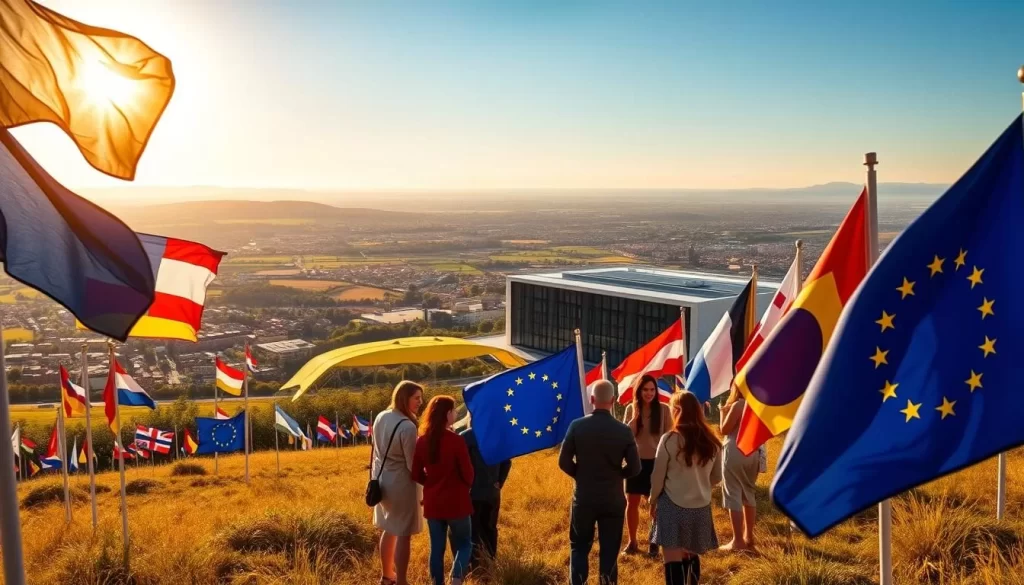
Lithuania’s language regulations align with EU standards, emphasizing the use of the native tongue in government and education. At the same time, the country promotes multilingualism, encouraging citizens to learn additional languages. This dual approach fosters both cultural preservation and global integration.
Standards and Regulations in Language Use
The European Union mandates that member states protect linguistic diversity while ensuring clear communication. In Lithuania, this means that all official documents and public services are provided in the native language. This regulation strengthens national identity while adhering to EU guidelines.
Additionally, the EU encourages the use of minority languages in education and media. Lithuania supports this initiative by offering bilingual programs and preserving regional dialects. These efforts ensure that linguistic diversity remains a vital part of the cultural landscape.
Multilingual Communication and EU Integration
Multilingualism is a key pillar of the European Union’s integration strategy. By 2025, the EU aims for citizens to speak their mother tongue plus two additional languages. Lithuania has embraced this goal, with schools teaching English and other European languages from an early age.
Programs like Erasmus+ further support this vision, enabling students to study abroad and gain language skills. These initiatives not only enhance individual opportunities but also strengthen cross-border cultural and economic ties.
“Language is the bridge that connects cultures, enabling us to share ideas and build understanding.”
For more insights into how the EU promotes linguistic diversity, explore this detailed resource. Lithuania’s commitment to these policies highlights its role as a proactive member of the European Union, fostering both unity and diversity through language.
Language in Education: Past and Present
Education has always been a powerful tool for preserving identity, especially when it comes to language. During periods of repression, teaching the native tongue became an act of resistance. Secret schools emerged, where educators risked their safety to keep the language alive.
In the late 19th century, only 6.9% of children attended state schools, as most were taught in underground settings. These efforts ensured that the language remained a vital feature of cultural identity. Today, this legacy is reflected in the high literacy rates, which reached 92% by 1939.
Modern education reforms have built on this foundation. The introduction of bilingual programs and updated curricula has strengthened the role of the native language in schools. For example, the new Teacher Training Model aims to attract motivated educators, ensuring that the next generation continues to value their linguistic heritage.
“A language is not just a tool for communication; it’s a living record of a nation’s history and identity.”
Individual educators have played a crucial role in this journey. From book smugglers to modern-day teachers, each person has contributed to the survival and growth of the language. Their dedication highlights the deep connection between education and cultural preservation.
For more insights into how the education system supports linguistic heritage, explore this detailed resource. The evolution of language education is a testament to the resilience of a people determined to preserve their identity.
Communication Trends in Modern Lithuania
In today’s fast-paced world, communication trends are evolving rapidly, blending global influences with local traditions. The rise of English as a global language is reshaping how people interact, especially in urban areas. At the same time, efforts to preserve traditional dialects highlight the importance of cultural heritage.
Rise of English and Global Communication
English is becoming increasingly prevalent, particularly among younger generations. Over 30% of the population speaks English as a foreign language, driven by its role in business, education, and pop culture. Social media and global connectivity have further accelerated this trend, introducing new vocabulary and phrases into everyday speech.
In urban centers, bilingual signage is common, reflecting the growing influence of English. This shift is evident in workplaces, where English is often the preferred language for cross-border communication. However, the native tongue remains dominant in official communications, showcasing a balance between global and local influences.
Preservation Efforts for Traditional Dialects
While English gains traction, traditional dialects continue to thrive in rural areas. Regional accents and unique vocabulary are celebrated as part of the cultural identity. Initiatives like the National Dictation Competition and the Strengthening Programme of Lithuanian Language Prestige aim to safeguard these dialects.
Schools play a crucial role in this effort, incorporating dialect studies into their curriculum. Community events and media also contribute, ensuring that younger generations stay connected to their roots. These efforts highlight the dynamic balance between global influence and local tradition.
“Language is the bridge that connects cultures, enabling us to share ideas and build understanding.”
Here’s a breakdown of key communication trends:
| Trend | Impact |
|---|---|
| Rise of English | Increased use in business and pop culture |
| Preservation of Dialects | Cultural heritage maintained in rural areas |
| Bilingual Signage | Reflects global and local influences |
These trends illustrate how communication is adapting to a globalized world while preserving cultural identity. Whether you’re exploring urban centers or rural villages, the blend of global and local influences is evident in every conversation.
Cultural Significance of Language in Lithuanian Identity
Language is more than just words—it’s the heartbeat of a nation’s identity. In this context, it serves as a key marker of cultural pride, connecting people to their heritage and traditions. For many, it’s a form of expression that transcends mere communication, embodying the soul of a community.
From literature to music, the language takes on various forms that reinforce cultural unity. Writers and poets have long used it to capture the essence of the nation’s spirit. Songs and folk tales passed down through generations keep the language alive, ensuring it remains a vital part of daily life.
Public art also plays a role in celebrating linguistic heritage. Murals, sculptures, and installations often feature words or phrases, turning the language into a visual form of identity. These creations remind people of their roots while inspiring pride in their cultural legacy.
Government initiatives further highlight the importance of language. Programs aimed at preserving and promoting linguistic heritage ensure that it remains a cornerstone of national identity. Festivals and cultural events also celebrate the language, bringing communities together to honor their shared history.
“Language is the thread that weaves the fabric of a nation, connecting past, present, and future.”
In everyday life, the language is a constant reminder of who you are and where you come from. Whether in conversations, family gatherings, or public spaces, it’s a form of identity that shapes how you see the world. Its symbolic importance is evident in the way it’s woven into the cultural fabric.
Understanding the cultural significance of language in Lithuanian offers a deeper appreciation of its role in shaping a nation. It’s a living, evolving form of expression that continues to inspire and unite people across generations.
Conclusion
Language serves as a bridge between generations, connecting the past to the present. Its evolution reflects centuries of history, from ancient roots to modern standards. Through education and policy, it has become a cornerstone of identity, uniting families and communities.
Today, the role of language extends beyond communication. It shapes how each person sees the world and connects to their heritage. The rise of multilingualism, with 70% of people knowing English and 76% knowing Russian, highlights its adaptability in a globalized world.
Understanding the history of the Baltic language group, including Lithuanian, offers insights into its cultural significance. For more on this, explore the Baltic languages.
In every conversation, language binds the nation’s past, present, and future. It’s a living testament to resilience and pride, ensuring that cultural heritage continues to thrive.
The above is subject to change.
Check back often to TRAVEL.COM for the latest travel tips and deals.
Here are some Tours & Sightseeing suggestions that might pique your interests!
